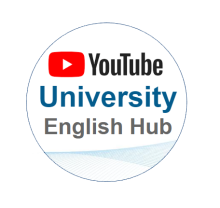難度:中階
開創性的研究藉由區別文獻差距及建立新的假設,調和矛盾的發現,開創新的方向。
如果您不瞭解文獻,則無法實現上述的目標。作者必須精準地彙整前輩和同儕的研究發現,以便確認或反駁。此外,作者希望讀者把重點集中在其研究假設的證據及分析解釋
我們將整理一些常見的研究報告發現的例句彙整成此寫作技巧。有些類似的結構句型可能已看過數百次,且也使用過。期望透過此寫作秘訣的分享,您可以更了解您的讀者對您使用這些常見的詞句及結構。
Method #1 – 使用轉述動詞( Reporting Verb)
轉述動詞相當常見於論文且必須使用的一種動詞。學術作者使用”Report”、 “demonstrate” 及 “show”等之轉述動詞來表示以往前的研究發現及證據。
Neurogenesis has been shown to be essential to the hippocampus’s ability to tolerate stress (Lehmann, 2013).
Transcription factor Spi-B has been demonstrated to be specifically expressed by M cells in gut epithelium (4).
It has been reported that texture weakening can be achieved by alloying Mg with yttrium and rare earth elements such as cerium or neodymium [1-3].
留意上述例句使用的是被動語態:也就是說英文表達方式並不會告知是誰”showed”了甚麼。Uni-edit修經驗中發現非英文母語的學術作者偏好被動語態的風格。被動語態的提倡者也經常聲稱其優點之一是客觀性:因為被動語態不會去指定如何執行、研究發現及研究方法等,因為這些不論是由誰執行全都應該是真實的。
但,實際上使用主動語態或多或少可提供給讀者更多關於不同證據的訊息。例,主動語態使用“many studies” 及“several authors”,亦可向讀者表達更高可信度。
Many studies have reported that texture weakening can be achieved by alloying Mg with yttrium (Y) and rare earth (RE) elements such as cerium (Ce) or neodymium (Nd) [1-3].
另一方面,如要表達對於創新、獨特、有爭議或尚未經證實的研究,有效的策略是明確指出該研究作者姓名,這會讓您的讀者了解您指出的是特定研究的發現,可從中參考其文獻,並學習其實驗方法、條件設定、及限制等。
能以較少字數、立即、直覺地表達的主動語態一樣可以表達與被動語態相同的可信度的。
Terahara et al. found that transcription factor Spi-B is specifically expressed by M cells (2008).
Transcription factor Spi-B has been found to be specifically expressed by M cells (Terahara et al., 2008).
Method #2 – 陳述研究發現之事實(添加引文)
讓我們再看看這些句子:是不是有其他文字可表達不同的證據層面?答案是肯定的:使用引文。
引文讓你有自信且以自然的英語表達某研究發現:只需描述事實。
Transcription factor Spi-B is specifically expressed by M cells (4).
Process innovation is critical in influencing service industry dynamics (Klepper, 1996).
Texture weakening can be achieved by alloying Mg with yttrium and rare earth elements such as cerium or neodymium [1-3].
閱讀這樣的句子時,讀者會想:“這個發現已經被幾項研究所證實:我可以假設它是真實的。”這是不錯的方式去表達該領域的常識、或許多相關論文的假設。引文已明顯地說明相關文獻已被參考,因此像“show”這樣的轉述動詞則非必要了。
有些情況是無法表述所有論文的共同發現,您可使用“many studies” 、“e.g.” 或“see”來進行闡述。
Many studies have shown that process innovation is critical in influencing service industry dynamics (e.g., Klepper 1996).
這與可信度有何關係?
關於Introduction,您可能直覺地認知應該從廣泛到專注。它應從研究領域及次領域中廣泛且高可信度的陳述開始,然後逐步介紹研究相關之具體發現。
將結果作為事實呈現對廣泛的陳述是有意義的(Method#2); 另一方面,單獨命名或列舉研究對具體的研究結果,也合乎邏輯(Method#1)。 列舉研究的數量(“一項研究”、“幾項研究”、或“僅少數研究”等)並不比直接表達相關研究的作者群們準確,但可顯示著研究發現中的細微差別的重要性。
關於有爭議或矛盾的研究發現?
好的研究不僅呈現已被支持或正建立的研究發現,還應包括有爭議或矛盾的發現。下列幾個原因可能陳述不完全正確的發現或證據:
1. 研究的目的是為了驗證該發現的低可信度。
2. 您的研究與其他的研究發現不同。
3. 告知讀者您的研究與之前的研究發現間或有爭議與矛盾,或尚未達成最後共識的成果。
4. 尊崇在你的領域中備受矚目的一篇論文,尤其當您是認同時(或您特別不認同時)。
結論
正如所看到的,讀者可以從略微差異的語言中推論不同的結果,即使對於學術寫作中的一些最常見的詞句也是如此!掌握“show”、“demonstrate”和“report”等轉述動詞,並結合有效使用引文和主動語態,將確保讀者能毫無爭議的辨別您的研究根基之創新、獨特、突破性。
Download Tip Here:  Prove It! (2017): Confidence, Evidence, and Citations
Prove It! (2017): Confidence, Evidence, and Citations
Uni-edit English Writing Tip 014 - Prove It! (2017): Confidence, Evidence, and Citations
Difficulty: Intermediate
Groundbreaking research pioneers new directions by identifying gaps in the literature, and by forming new hypotheses to reconcile contradictory findings.
You can’t achieve this goal without knowing the literature. You have to report the findings of your predecessors and peers accurately in order to confirm or refute them. Moreover, you want your readers to focus on evidence that is central to your study hypothesis, and your own interpretation of your own analysis.
In this tip, we’ll review some common ways to report findings with many example sentences. You’ve probably seen these structures hundreds of times, and used them in your own papers. However, after reading this tip, hopefully you’ll have a better awareness of what your readers think when you use these common phrases and structures.
Method #1 - Use a Reporting Verb
Every academic writer uses reporting verbs like “report”, “demonstrate”, and “show”, which indicate findings or evidence from previous research. Reporting verbs are common and expected in every paper.
Neurogenesis has been shown to be essential to the hippocampus’s ability to tolerate stress (Lehmann, 2013).
Transcription factor Spi-B has been demonstrated to be specifically expressed by M cells in gut epithelium (4).
It has been reported that texture weakening can be achieved by alloying Mg with yttrium and rare earth elements such as cerium or neodymium [1-3].
Note that the sentences above all use the passive voice: i.e., the English does not tell you who ‘showed’ what. At Uni-edit, we have noticed that non-native speakers of academic English seem to prefer passive voice. Advocates of passive voice often claim objectivity as one of its advantages: i.e., because passive voice doesn’t specify the agent, the finding, method, etc. should be true regardless of who does it.
However, you can actually use the active voice to provide more information to readers about the level of evidence, in as many words or fewer. For example, as below, expressions like “many studies” and “several authors” used in the active voice tell the reader that the statement has a high level of confidence.
Many studies have reported that texture weakening can be achieved by alloying Mg with yttrium (Y) and rare earth (RE) elements such as cerium (Ce) or neodymium (Nd) [1-3].
On the other hand, specifying the author of a study by name is an effective strategy for novel, unique, controversial, or uncorroborated findings. This tells your reader a finding is specific to a certain study or studies, and they should consult that reference to learn more about the experimental method, conditions, limitations, etc.
Using the active voice implies the same level of confidence as the passive voice, but immediately and intuitively shows the evidence, in fewer words.
Terahara et al. found that transcription factor Spi-B is specifically expressed by M cells (2008).
Transcription factor Spi-B has been found to be specifically expressed by M cells (Terahara et al., 2008).
Method #2 - State Findings as Facts (but Add a Citation)
Let’s take another look at these sentences: isn’t there other text that conveys the level of evidence? The answer is yes: the citations.
Citations let you report a finding in confident, natural English: just report it as a fact.
Transcription factor Spi-B is specifically expressed by M cells (4).
Process innovation is critical in influencing service industry dynamics (Klepper, 1996).
Texture weakening can be achieved by alloying Mg with yttrium and rare earth elements such as cerium or neodymium [1-3].
Upon reading a sentence like one of these, your readers will think: “This is a finding that has been corroborated by several studies: I can assume it is true.” This is good practice for common knowledge in the field, or assumptions made by many related papers. Reporting verbs like “show” aren’t necessary: the presence of a citation makes it obvious you are referencing the literature.
In some cases, it’s impossible to name all the papers that support a finding: in these cases, you can use “many studies” and “e.g.” or “see”.
Many studies have shown that process innovation is critical in influencing service industry dynamics (e.g., Klepper 1996).
What Does This Have to Do with Confidence?
You probably know intuitively that the Introduction section should progress from broad to narrow: it should start with broad, high-confidence statements about your field and subfield, and gradually introduce specific findings and studies relevant to your research.
For broad statements, it makes sense to present the findings as facts (Method #2); for specific findings, on the other hand, it makes sense to name or enumerate the studies individually (Method #1). Enumerating the number of studies (“one study”, “several studies”, “only a few studies”, etc.) is less precise than naming the authors of the relevant studies, but can imply the level of importance of a finding with greater nuance.
What about Controversial or Contradictory Findings?
Note that good research should not only present well-supported or established findings, but also controversial or contradictory findings. There are several possible reasons to report findings or evidence that might not be completely true:
- The purpose of your study is to corroborate the low-evidence finding.
- Your findings disagree with the other study’s findings.
- To tell your reader there is controversy, or that conflicting findings have been found, or that a final agreement has not been reached.
- To acknowledge a high-profile paper in your field, if you agree with it (or especially if you don’t!).
Summary
As we can see, readers can draw different inferences from language that is only slightly different, even for some of the most common phrases in academic writing! Mastery of reporting verbs like “show”, “demonstrate”, and “report”, combined with efficient use of citations and the active voice, will ensure your readers can separate the uncontroversial background of your study from its new, unusual, and groundbreaking elements.
END OF TIP



